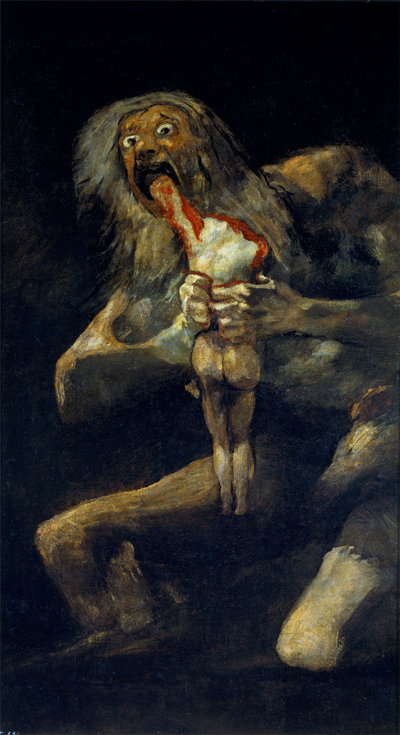Goya’s black paintings
Goya’s black paintings
Posted June. 18, 2020 07:34,
Updated June. 18, 2020 07:34

The painting depicts a terrible and revolting scene. A horrible-looking man is holding and eating a young child. The painting was created by Francisco de Goya (1746-1828) in his later years. How did the court painter who was so favored by the palace come to draw such a horrific painting?
Goya lived a prosperous life as a Spanish court painter, but he often used art as tools of satire to depict the era he lived in. Though his main job was to paint portraits of the royal family, he often drew sensational nude paintings at his patron’s requests. After he lost his hearing due to high fever in his mid-40s and barely escaping death twice, Goya gained interest in the inner world.
In 1819, he purchased a farm in the outskirts of Madrid and used it as his atelier, which was previously owned by a deaf man and known as a “deaf man’s house.” He distanced himself away from the world and completed his final masterpieces there. He painted the walls of the house black and drew 14 paintings over four years. A weak man in his 70s, nearly blind and profoundly deaf, Goya still completed the paintings on his own without the help of any assistants. Unlike the paintings requested by his patrons, these were the most expressive tools that showed Goya’s inner world and world of art.
The paintings he completed in the later years of his life became known as “black paintings,” of which “Saturn Devouring His Son” is the most famous. The Spanish painter depicted Saturn, fearing that he would be overthrown by one of his children, eating his child as a madman. At the time he was drawing the painting, Goya was terminally ill, always thinking about death and felt disillusioned with the church and royal family. Though the painting is based on the Greek myth, Goya may have wanted to express the disgust of humans’ desire for power, violence and madness, and instinct for evil.







